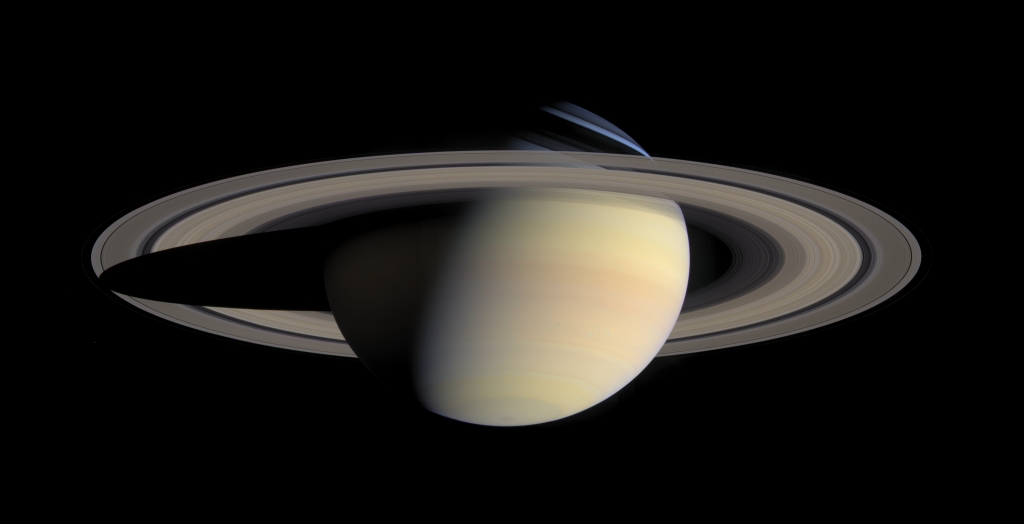Saturn

Image courtesy Nasa
Diameter: 120536 Kilometers
Mass: 95.152 of Earths
Surface temperature: -139.15 degrees Celcius
Orbit around sun: 10759 days
Moons: 62
Saturn`s composition is around 96.3% Hydrogen and 3.25% Helium. Other elements are trace with no real percentages known. It is thought that the centre of Saturn is solid with a metallic hydrogen layer surrounding that and then the hydrogen layer on the outside. Saturn emits 250% more radiation that it absorbs from the Sun, which indicates its core is over 11000 degrees centigrade.
The most notable feature of Saturn is the famous ring structure. Using a telescope it is easy to see that the ring has seperate bands. Using very expensive large telescopes it is possible to see hundreds of bands. The origins of the rings have been debated for a long period of time but it is most likely that there was some moon or asteroid that was destroyed hundreds of millions of years ago. The rings are made up from particles the size of dust to pieces over 10 metres in size. It is these larger pieces that give the greatest indication the rings were from a destroyed moon or asteroid.
| Saturn in other languages:- |
| Cebuano: | saturn |
| Chinese: | tǔxīng 土星 |
| French: | saturne |
| German: | m saturn |
| Greek: | Κρόνος |
| Indonesian: | saturnus |
| Italian: | m satturno |
| Japanese: | dosei 土星 |
| Nederlands: | c saturnus |
| Norwegian: | saturn |
| Polish: | m saturn |
| Portuguese: | m saturno |
| Spanish: | m saturno |
| Tagalog: | saturno |
| Turkish: | satürn |